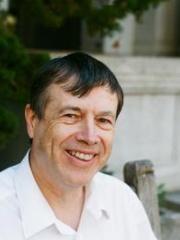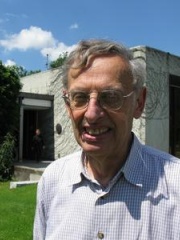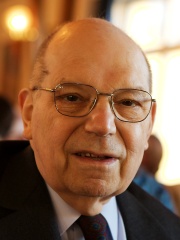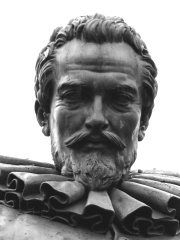
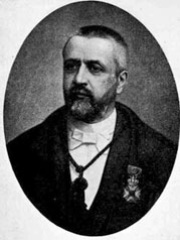
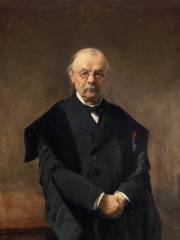
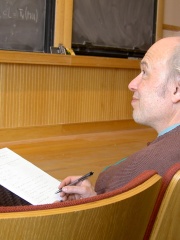
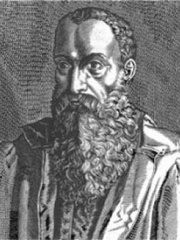
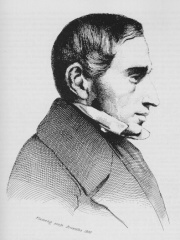
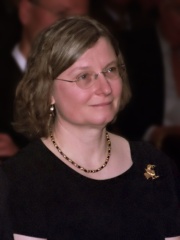
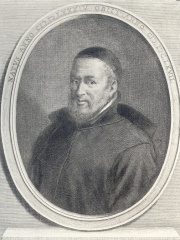
The Most Famous
MATHEMATICIANS from Belgium
This page contains a list of the greatest Belgian Mathematicians. The pantheon dataset contains 1,004 Mathematicians, 13 of which were born in Belgium. This makes Belgium the birth place of the 16th most number of Mathematicians behind Austria, and Netherlands.
Top 10
The following people are considered by Pantheon to be the top 10 most legendary Belgian Mathematicians of all time. This list of famous Belgian Mathematicians is sorted by HPI (Historical Popularity Index), a metric that aggregates information on a biography's online popularity. Visit the rankings page to view the entire list of Belgian Mathematicians.

1. Simon Stevin (1548 - 1620)
With an HPI of 73.44, Simon Stevin is the most famous Belgian Mathematician. His biography has been translated into 45 different languages on wikipedia.
Simon Stevin (Dutch: [ˈsimɔn steːˈvɪn]; 1548–1620), sometimes called Stevinus, was a Flemish mathematician, scientist and music theorist. He made various contributions in many areas of science and engineering, both theoretical and practical. He also translated various mathematical terms into Dutch, making it one of the few European languages in which the word for mathematics, wiskunde (wis and kunde, i.e., "the knowledge of what is certain"), was not a loanword from Greek but a calque via Latin. He also replaced the word chemie, the Dutch for chemistry, by scheikunde ("the art of separating"), made in analogy with wiskunde.

2. Victor D'Hondt (1841 - 1902)
With an HPI of 67.37, Victor D'Hondt is the 2nd most famous Belgian Mathematician. His biography has been translated into 33 different languages.
Victor Joseph Auguste D'Hondt (Dutch: [ˈvɪktɔr ˈtɔnt]; 20 November 1841 – 30 May 1901) was a Belgian lawyer and jurist of civil law at Ghent University. He devised a procedure, the D'Hondt method, which he first described in 1878, for allocating seats to candidates in party-list proportional representation elections. The method has been adopted by a number of countries, including Albania, Argentina, Armenia, Austria, Belgium, Bulgaria, Chile, Colombia, Croatia, Czech Republic, Denmark, Ecuador, Fiji, Finland, Israel, Japan, North Macedonia, the Netherlands, Northern Ireland, Paraguay, Poland, Portugal, Scotland, Slovenia, Serbia, Spain, Switzerland, Turkey, Iceland, Uruguay and Wales. A modified D'Hondt system is used for elections to the London Assembly and the Scottish Parliament. Victor D’Hondt was an influential proponent of proportional representation in Belgium. He published several articles on proportional representation and was founding member of the Association Réformiste Belge pour l'Adoption de la Representation Proportionnelle in 1881. From 1885 he served as professor of civil and fiscal law at the University of Ghent. In 1896 he was awarded the title Officer in the Belgian Order of Leopold.

3. Eugène Charles Catalan (1814 - 1894)
With an HPI of 65.89, Eugène Charles Catalan is the 3rd most famous Belgian Mathematician. His biography has been translated into 35 different languages.
Eugène Charles Catalan (French pronunciation: [øʒɛn ʃaʁl katalɑ̃]; 30 May 1814 – 14 February 1894) was a French and Belgian mathematician who worked on continued fractions, descriptive geometry, number theory and combinatorics. His notable contributions included discovering a periodic minimal surface in the space R 3 {\displaystyle \mathbb {R} ^{3}} ; stating the famous Catalan's conjecture, which was eventually proved in 2002; and introducing the Catalan numbers to solve a combinatorial problem.

4. Pierre Deligne (b. 1944)
With an HPI of 64.78, Pierre Deligne is the 4th most famous Belgian Mathematician. His biography has been translated into 38 different languages.
Pierre René, Viscount Deligne (French: [dəliɲ]; born 3 October 1944) is a Belgian mathematician. He is best known for work on the Weil conjectures, leading to a complete proof in 1973. He is the winner of the 1978 Fields Medal, 1988 Crafoord Prize, 2008 Wolf Prize and 2013 Abel Prize.
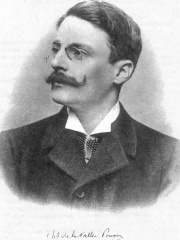
5. Charles Jean de la Vallée Poussin (1866 - 1962)
With an HPI of 61.88, Charles Jean de la Vallée Poussin is the 5th most famous Belgian Mathematician. His biography has been translated into 21 different languages.
Charles-Jean Étienne Gustave Nicolas, baron de la Vallée Poussin (French pronunciation: [ʃaʁl ʒɑ̃ etjɛn ɡystav nikɔla baʁɔ̃ də la vale pusɛ̃]; 14 August 1866 – 2 March 1962) was a Belgian mathematician. He is best known for proving the prime number theorem. The King of Belgium ennobled him with the title of baron.

6. Adriaan van Roomen (1561 - 1615)
With an HPI of 61.25, Adriaan van Roomen is the 6th most famous Belgian Mathematician. His biography has been translated into 19 different languages.
Adriaan van Roomen (29 September 1561 – 4 May 1615), also known as Adrianus Romanus, was a mathematician, professor of medicine and medical astrologer from the Duchy of Brabant in the Habsburg Netherlands who was active throughout Central Europe in the late 16th and early 17th centuries. As a mathematician he worked in algebra, trigonometry and geometry; and on the decimal expansion of pi. He solved the Problem of Apollonius using a new method that involved intersecting hyperbolas. He also wrote on the Gregorian calendar reform.

7. Pierre François Verhulst (1804 - 1849)
With an HPI of 60.26, Pierre François Verhulst is the 7th most famous Belgian Mathematician. His biography has been translated into 17 different languages.
Pierre François Verhulst (28 October 1804, in Brussels – 15 February 1849, in Brussels) was a Belgian mathematician and a doctor in number theory from the University of Ghent in 1825. He is best known for the logistic growth model.

8. Ingrid Daubechies (b. 1954)
With an HPI of 59.71, Ingrid Daubechies is the 8th most famous Belgian Mathematician. Her biography has been translated into 35 different languages.
Baroness Ingrid Daubechies ( doh-bə-SHEE; French: [dobʃi]; born 17 August 1954) is a Belgian-American physicist and mathematician at Duke University. She is best known for her work with wavelets in image compression. Daubechies is recognized for her study of the mathematical methods that enhance image-compression technology. She is a member of the National Academy of Engineering, the National Academy of Sciences and the American Academy of Arts and Sciences. She is a 1992 MacArthur Fellow. She also served on the Mathematical Sciences jury for the Infosys Prize from 2011 to 2013. The name Daubechies is widely associated with the orthogonal Daubechies wavelet and the biorthogonal CDF wavelet. A wavelet from this family of wavelets is now used in the JPEG 2000 standard. Her research involves the use of automatic methods from both mathematics, technology, and biology to extract information from samples such as bones and teeth. She also developed sophisticated image processing techniques used to help establish the authenticity and age of some of the world's most famous works of art, including paintings by Vincent van Gogh and Rembrandt. Daubechies is on the board of directors of Enhancing Diversity in Graduate Education (EDGE), a program that helps women entering graduate studies in the mathematical sciences. She was the first woman to be president of the International Mathematical Union (2011–2014). She became a member of the Academia Europaea in 2015.

9. Grégoire de Saint-Vincent (1584 - 1667)
With an HPI of 59.10, Grégoire de Saint-Vincent is the 9th most famous Belgian Mathematician. His biography has been translated into 20 different languages.
Grégoire de Saint-Vincent (French: [ɡʁeɡwaʁ də sɛ̃ vɛ̃sɑ̃]; Latin: Gregorius a Sancto Vincentio, Dutch: Gregorius van St-Vincent; 8 September 1584 Bruges – 5 June 1667 Ghent) was a Flemish Jesuit and mathematician. He is remembered for his work on quadrature of the hyperbola. He is also known as Gregorio a San Vincente. Grégoire gave the "clearest early account of the summation of geometric series." He also resolved Zeno's paradox by showing that the time intervals involved formed a geometric progression and thus had a finite sum.
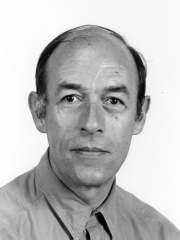
10. David Ruelle (b. 1935)
With an HPI of 58.64, David Ruelle is the 10th most famous Belgian Mathematician. His biography has been translated into 19 different languages.
David Pierre Ruelle (French: [david pjɛʁ ʁɥɛl]; born 20 August 1935) is a Belgian and naturalized French mathematical physicist. He has worked on statistical physics and dynamical systems. With Floris Takens, Ruelle coined the term strange attractor, and developed a new theory of turbulence.
People
Pantheon has 13 people classified as Belgian mathematicians born between 1548 and 1954. Of these 13, 3 (23.08%) of them are still alive today. The most famous living Belgian mathematicians include Pierre Deligne, Ingrid Daubechies, and David Ruelle. The most famous deceased Belgian mathematicians include Simon Stevin, Victor D'Hondt, and Eugène Charles Catalan.
Living Belgian Mathematicians
Go to all RankingsPierre Deligne
1944 - Present
HPI: 64.78
Ingrid Daubechies
1954 - Present
HPI: 59.71
David Ruelle
1935 - Present
HPI: 58.64
Deceased Belgian Mathematicians
Go to all RankingsSimon Stevin
1548 - 1620
HPI: 73.44
Victor D'Hondt
1841 - 1902
HPI: 67.37
Eugène Charles Catalan
1814 - 1894
HPI: 65.89
Charles Jean de la Vallée Poussin
1866 - 1962
HPI: 61.88
Adriaan van Roomen
1561 - 1615
HPI: 61.25
Pierre François Verhulst
1804 - 1849
HPI: 60.26
Grégoire de Saint-Vincent
1584 - 1667
HPI: 59.10
Jean Bourgain
1954 - 2018
HPI: 57.72
Elias M. Stein
1931 - 2018
HPI: 57.29
Jacques Tits
1930 - 2021
HPI: 57.01
Overlapping Lives
Which Mathematicians were alive at the same time? This visualization shows the lifespans of the 6 most globally memorable Mathematicians since 1700.

